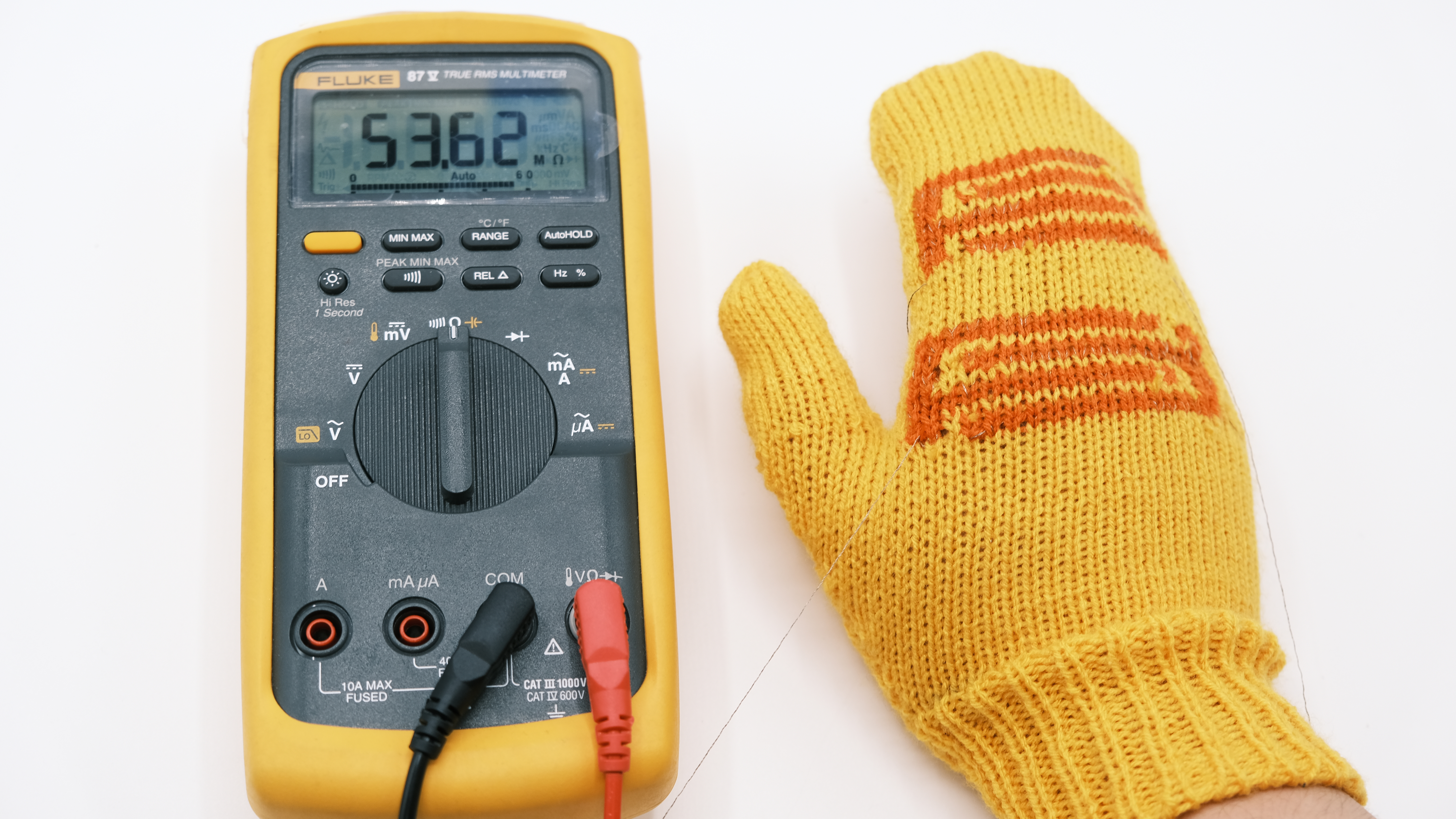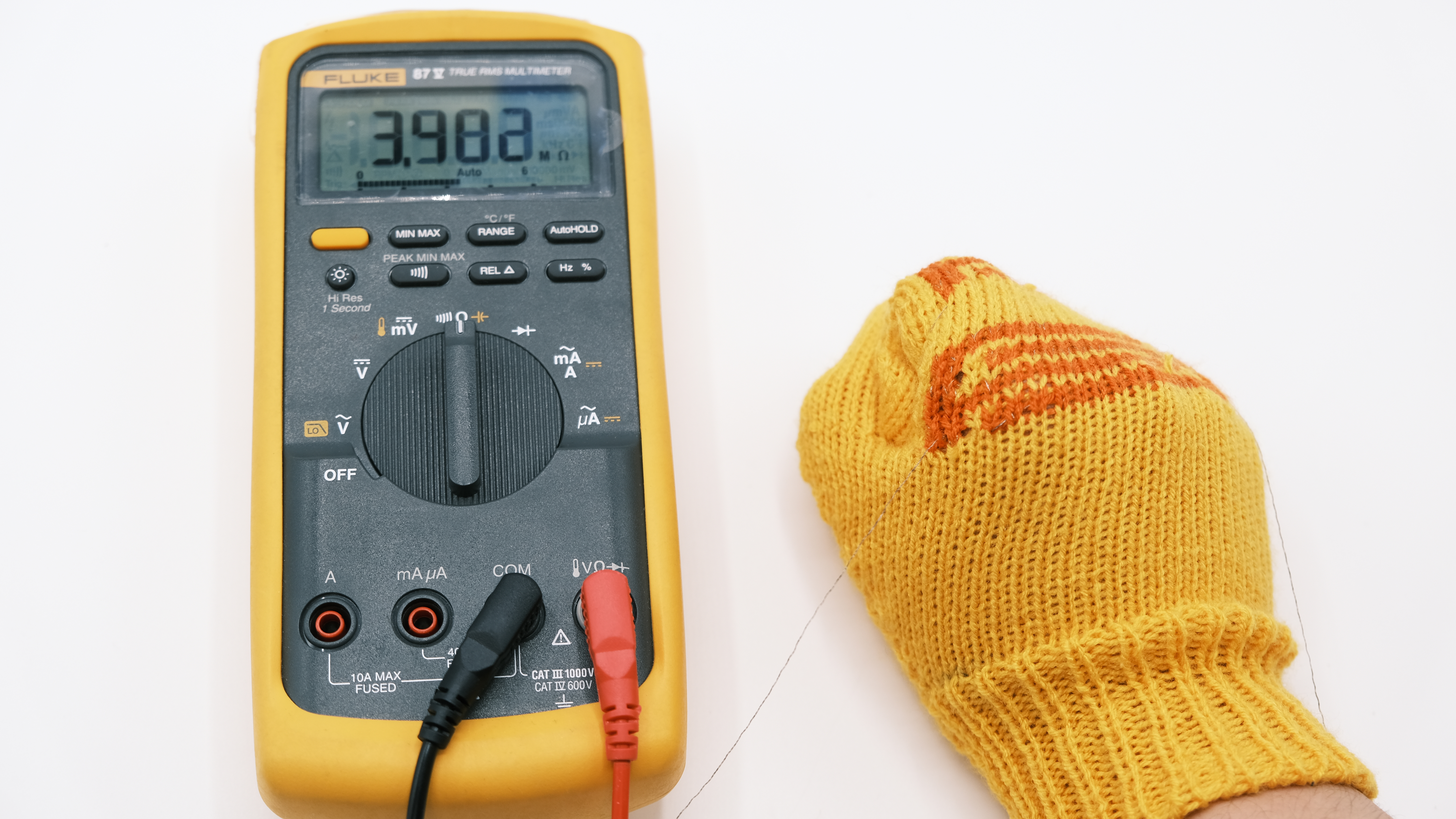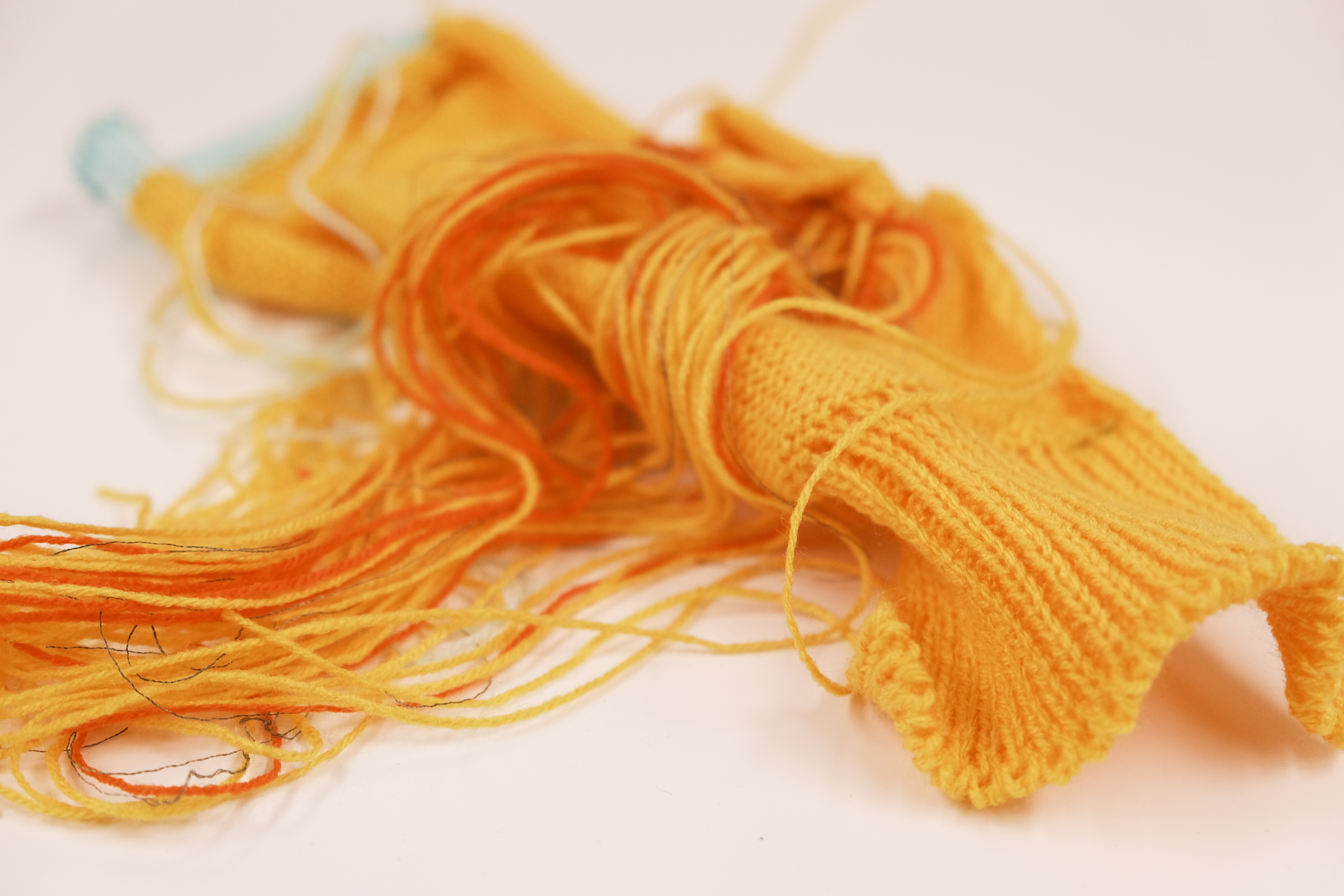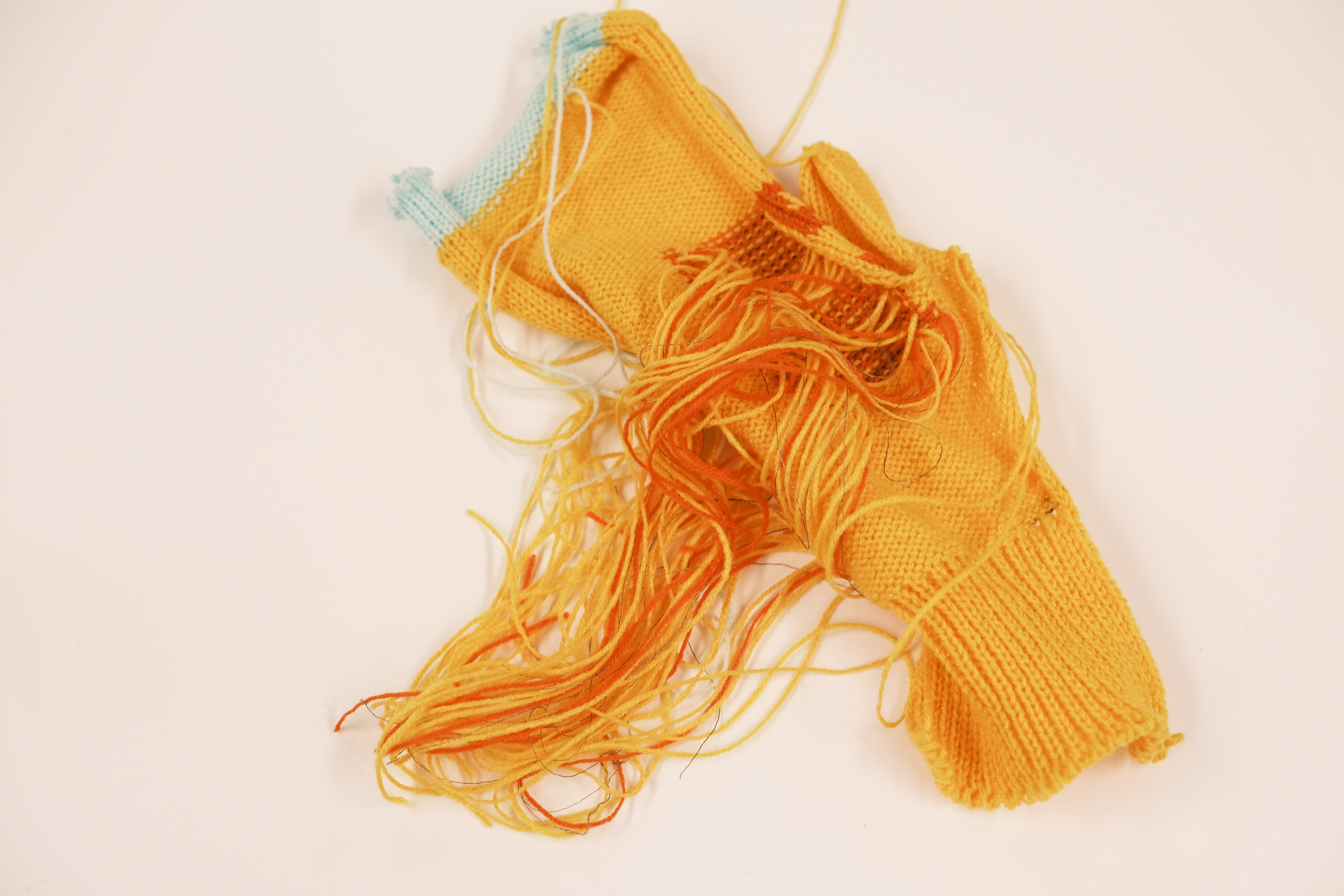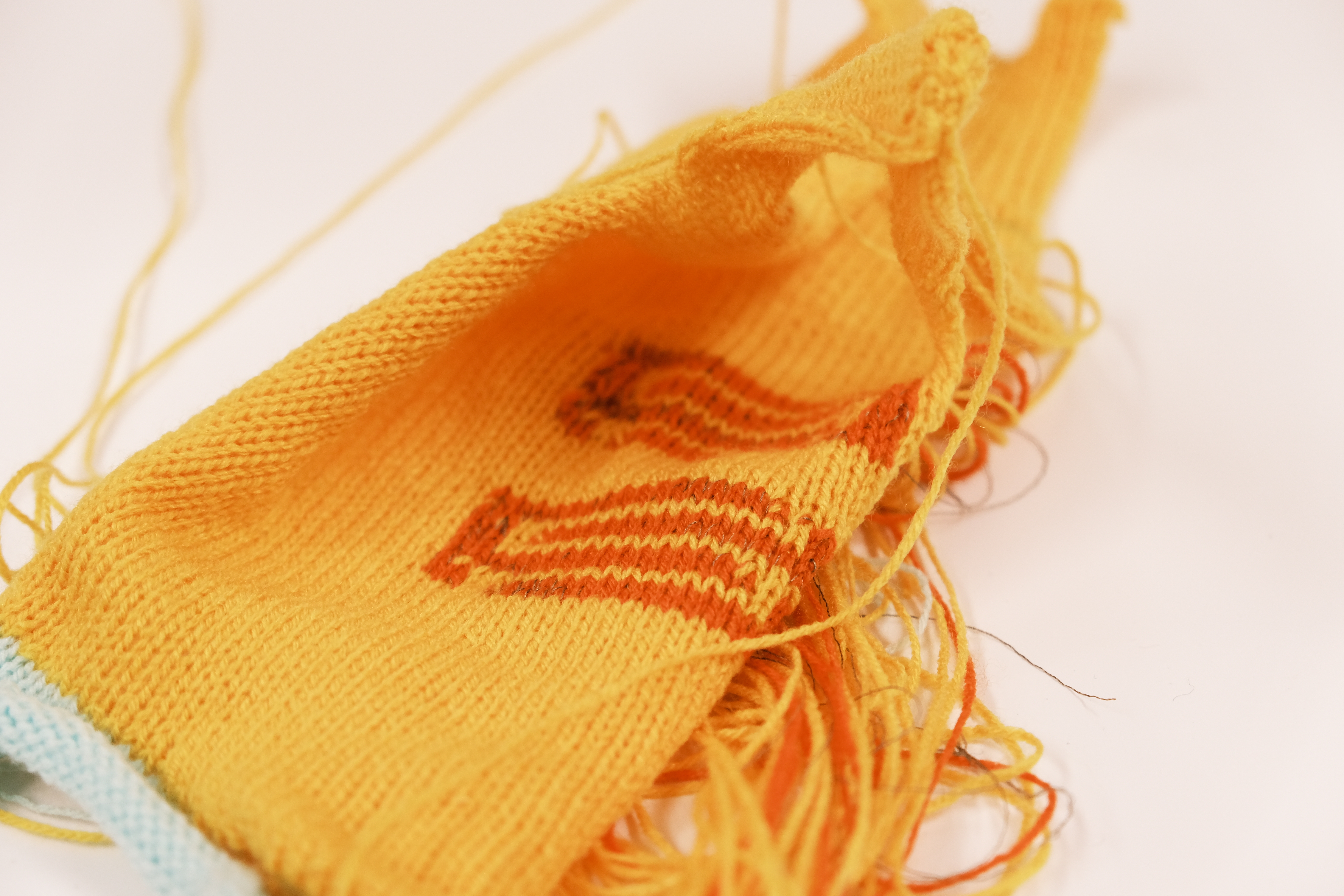Knit Sensors @ Yuecheng
🧶 This is a knitted sensor demo collection done during my research at the Machine Agency. I made all the sensors shown on this page, and the paper is done in collaboration with Hannah Twigg-Smith, advised by Nadya Peek and Emily Whiting.
🔆 Highlights
- Embedded sensing capabilities in textiles/garments, including touch, pressure, humidity, and stretch sensing.
- All samples knitted on the Silver Reed Sk840 machine.
- Intarsia is used to create colorworks, which requires heavy manual yarn changing & arrangement on the Silver Reed machine. However, it is useful in terms of creating isolated sensing areas compared with other colorwork techniques such as Fair Isle, tuck, and slip stitch.
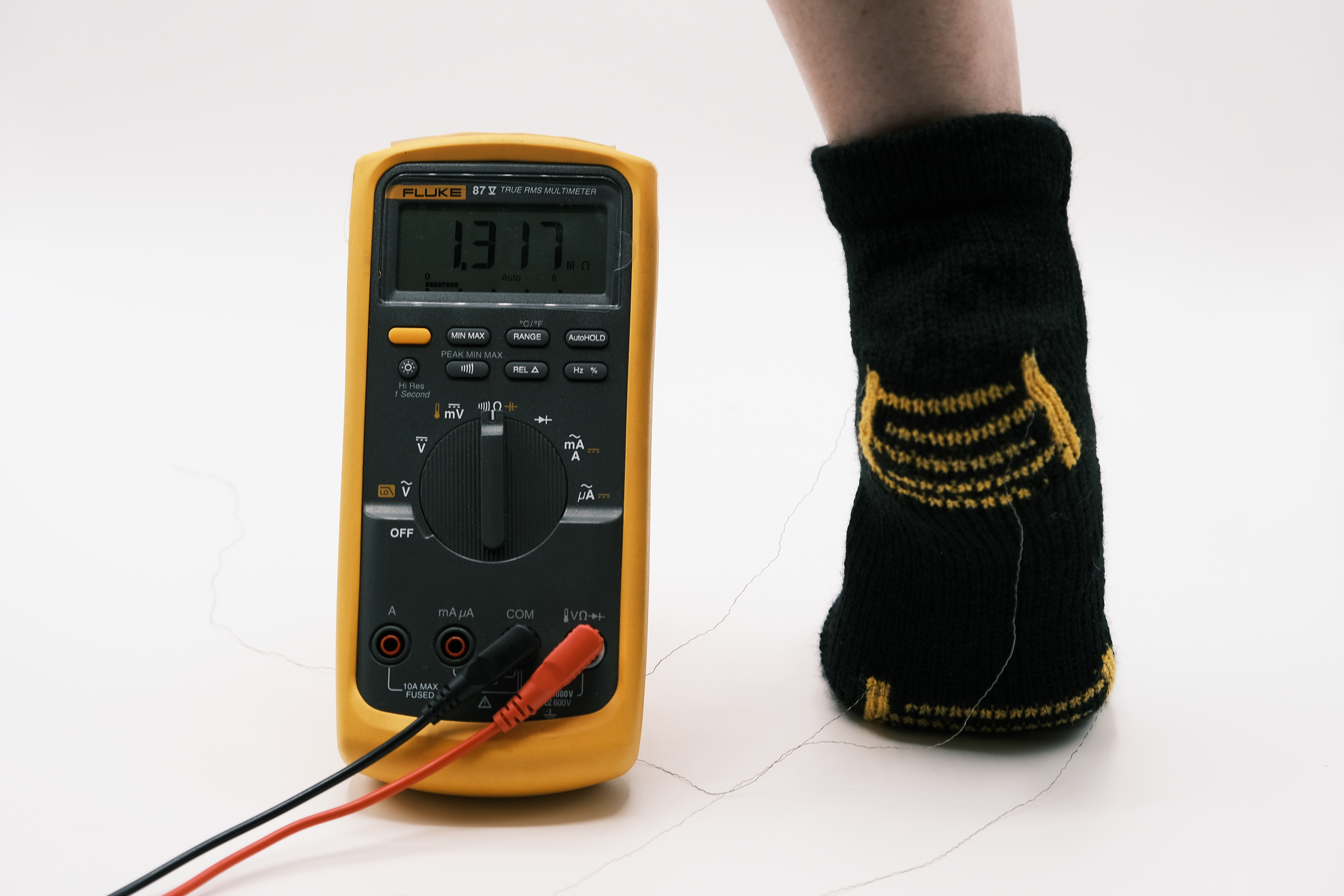
Capacitive Touch Sensors
With intarsia, we can have knitted "icons", such as ⬅︎⬆︎⬇︎➡︎.
With this, we can create a textile control pad. In this demo, I ran conductive yarn along with the dark blue yarn while knitting. In the following samples, the same method was applied in the knitting process of sensing areas.
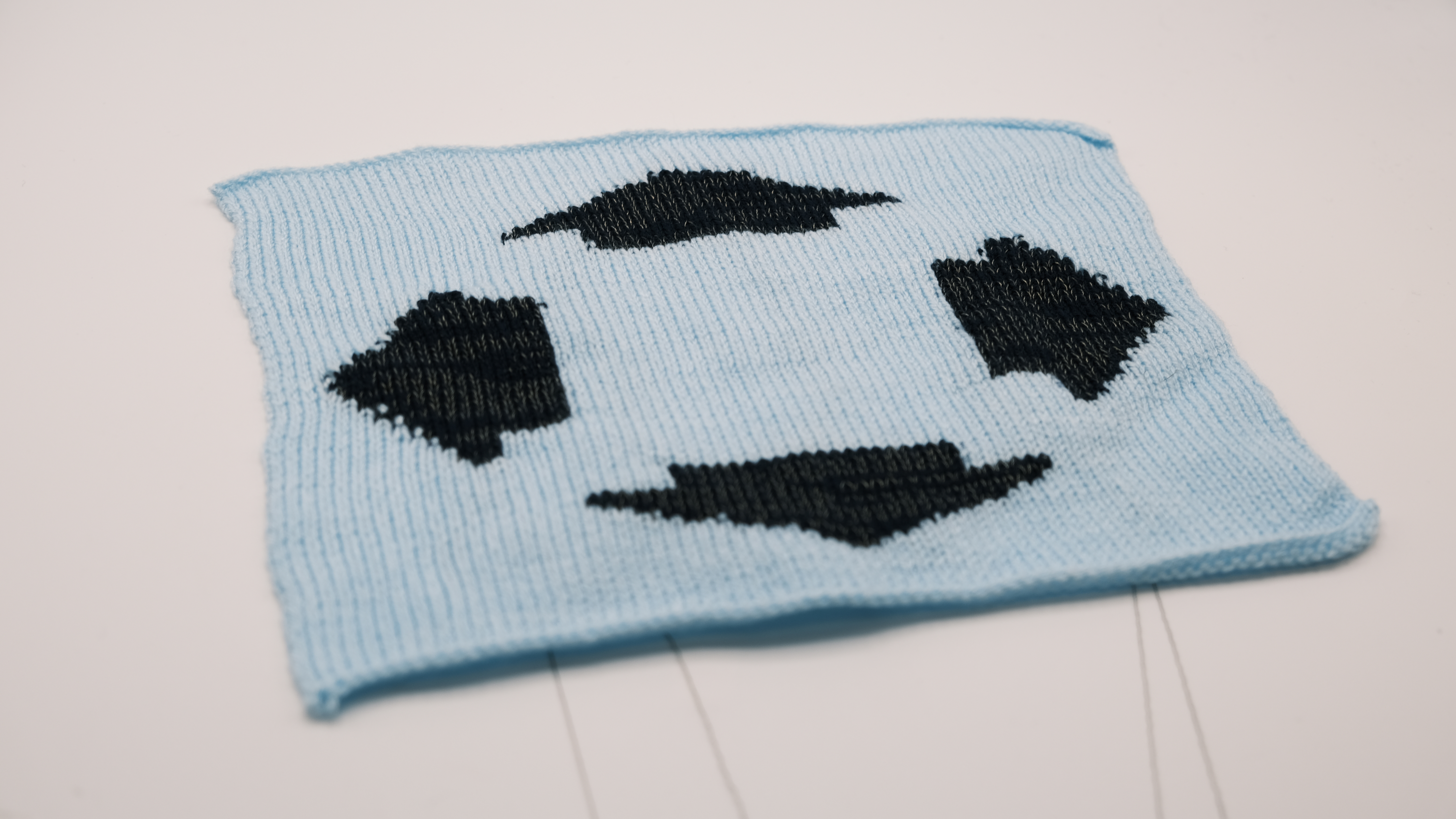
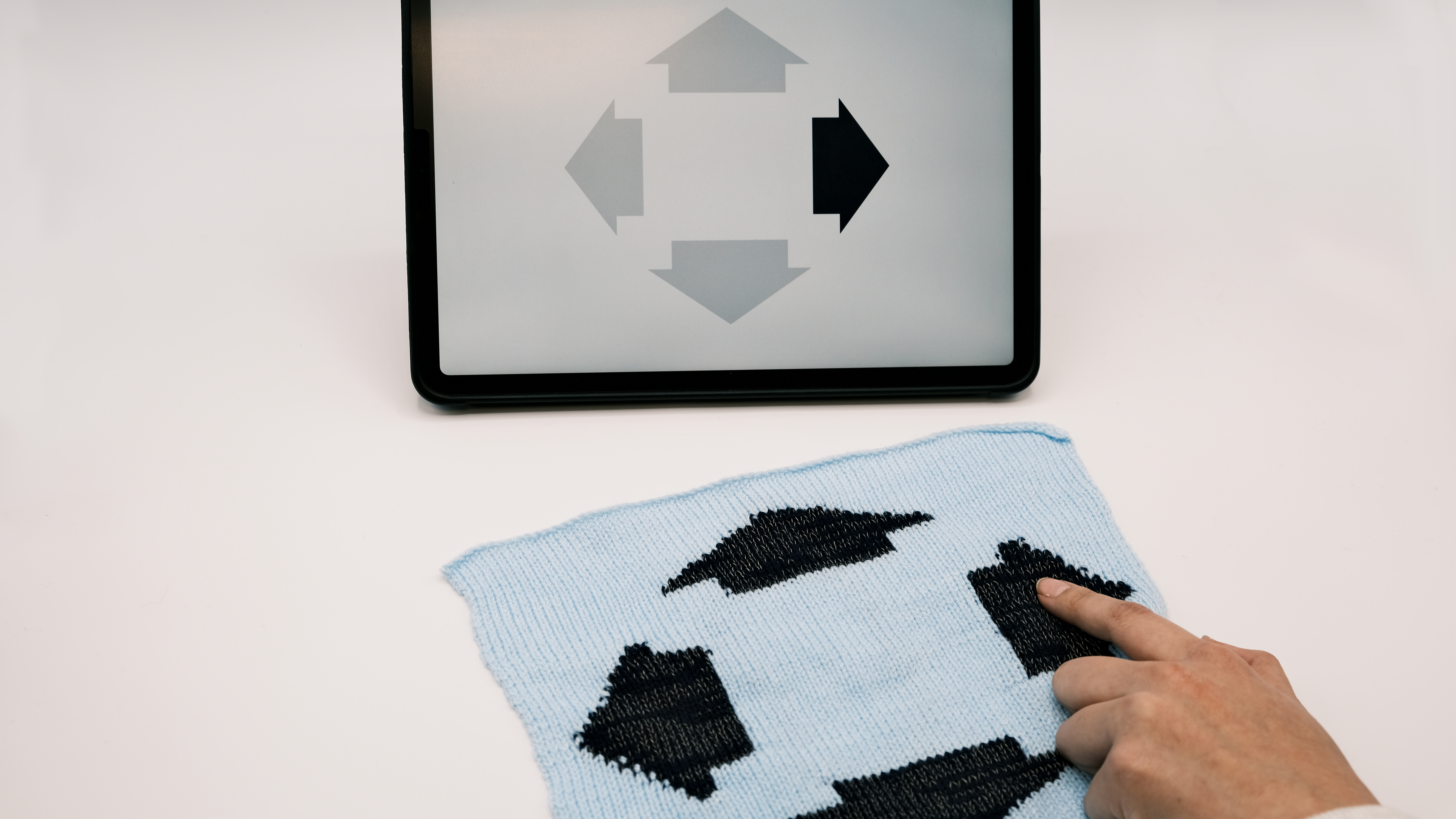
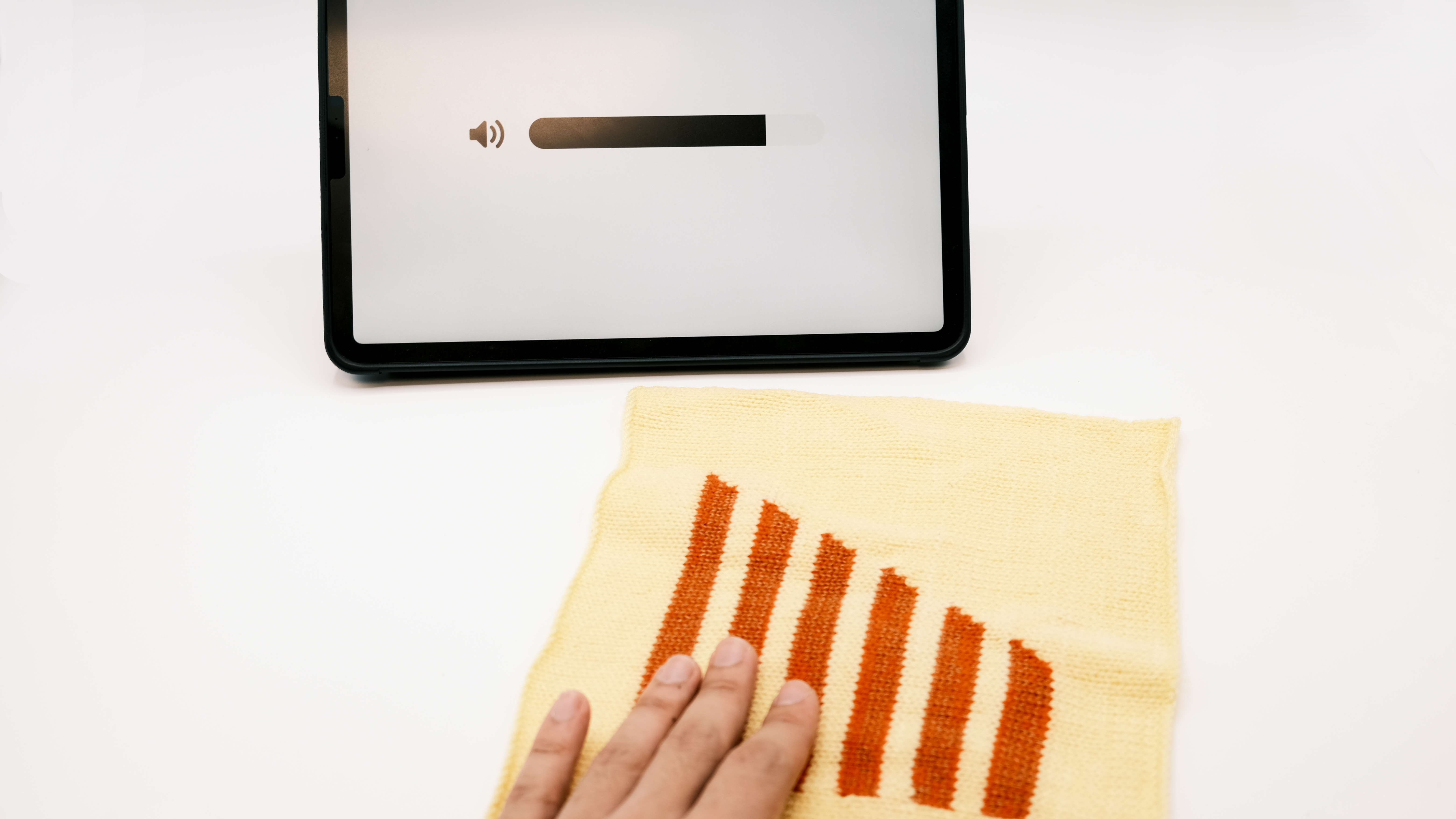
Or, we can knit a textile volume controller, which can be integrated into your favorite sweater maybe.
We can also knit more complex patterns, such as letters.
For example, I have a on-off switch touch pad here.
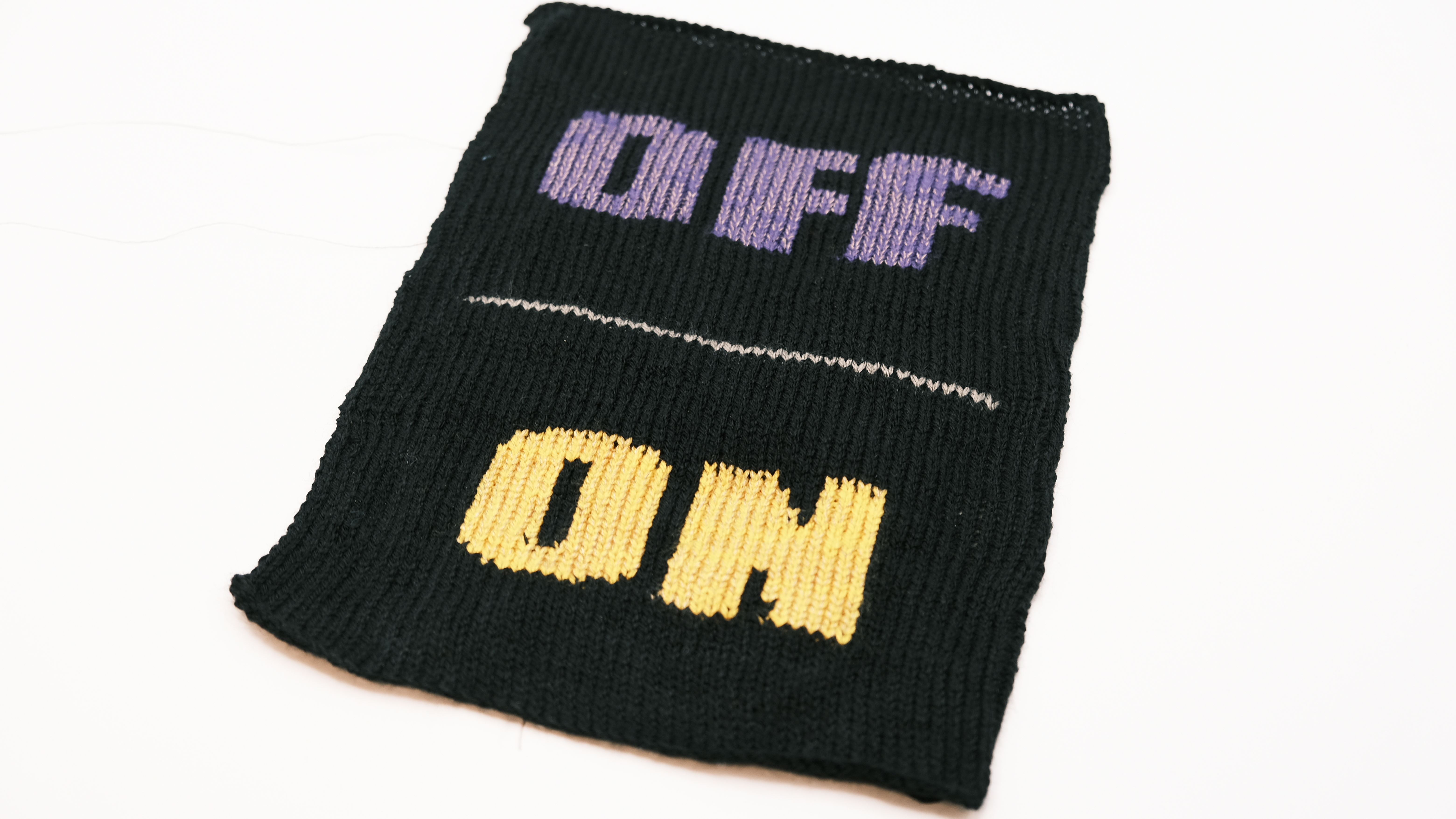
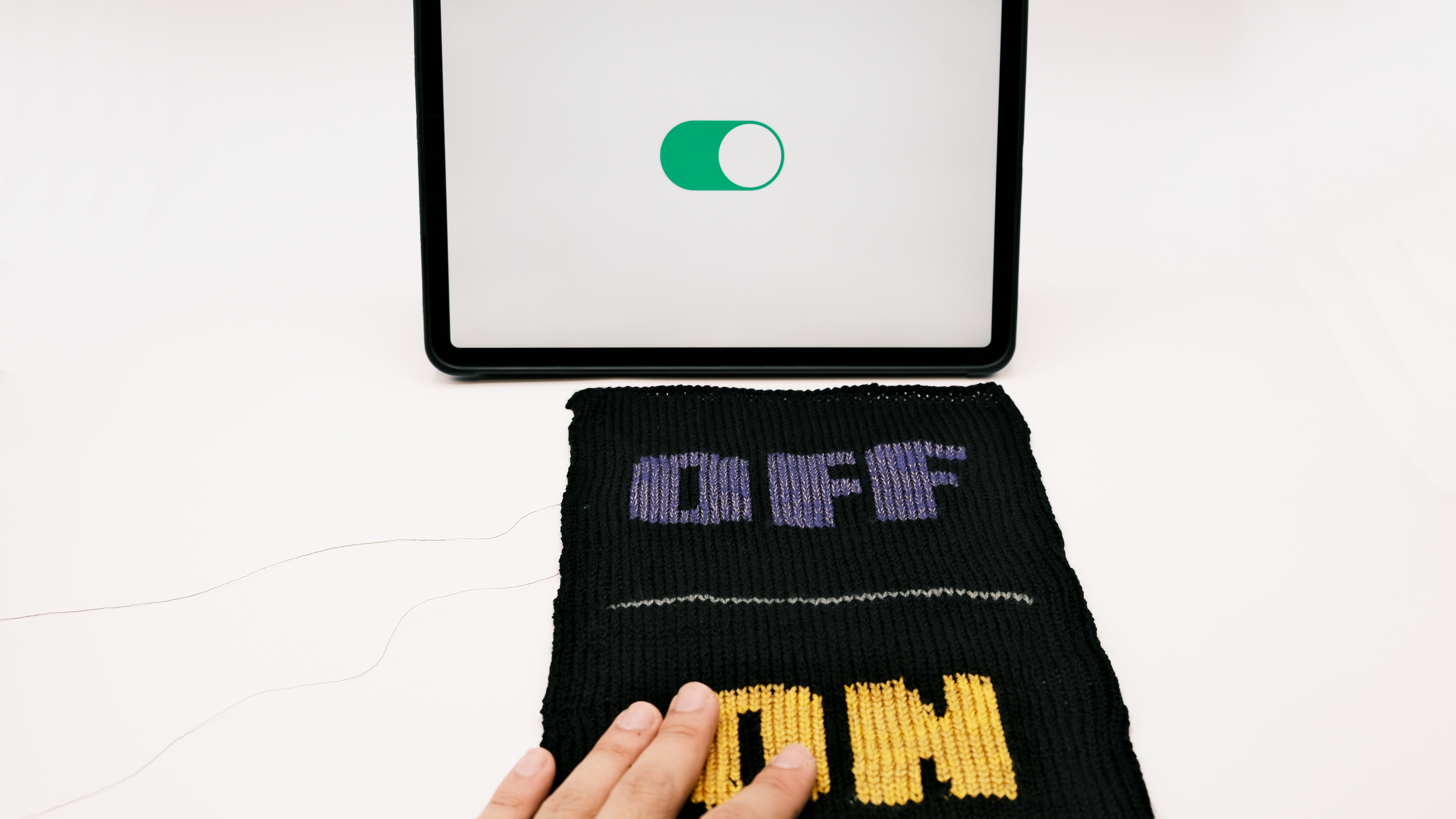
Humidity Sensors
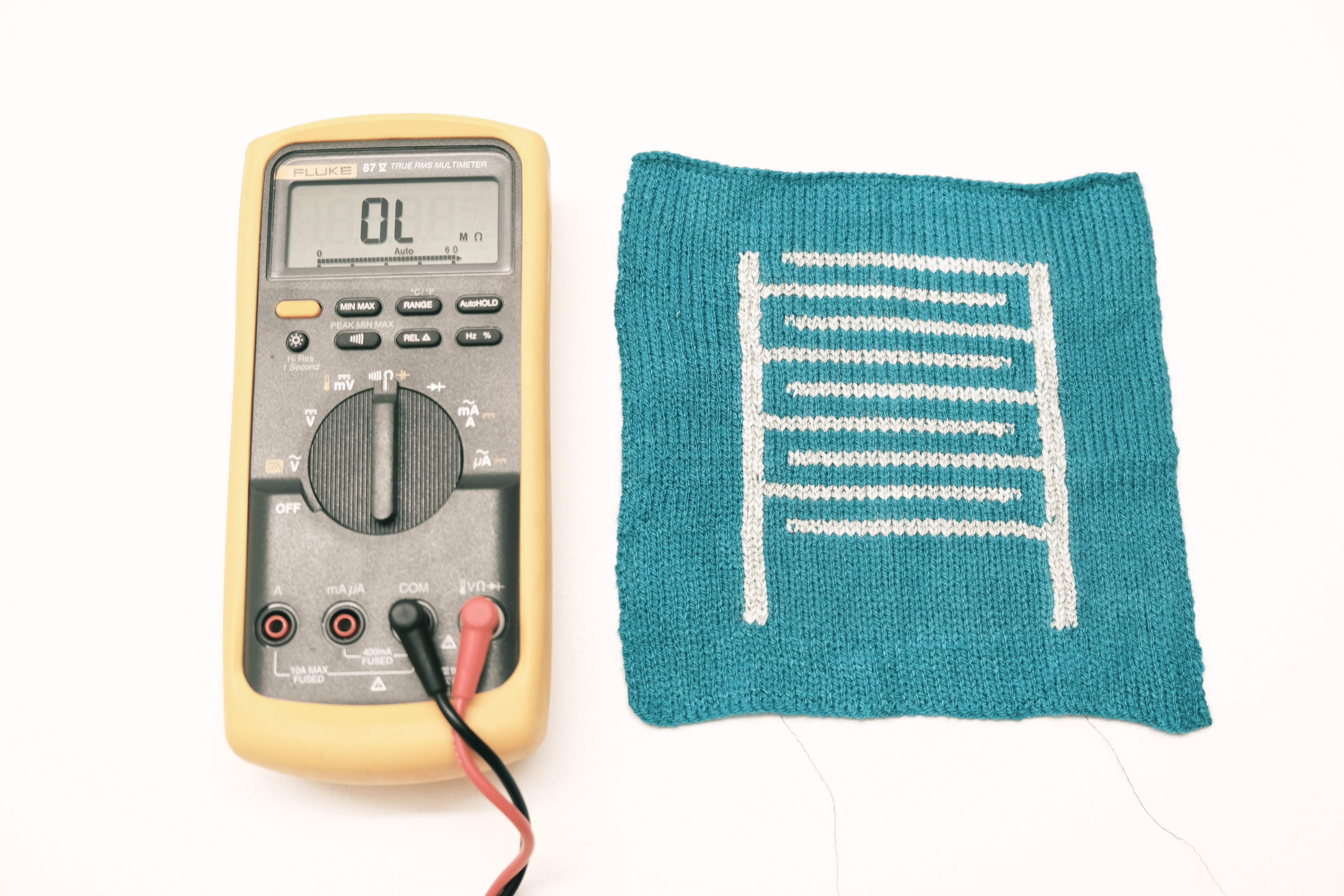
I also found an interdigital electrode pattern can be used as a humidity sensor.
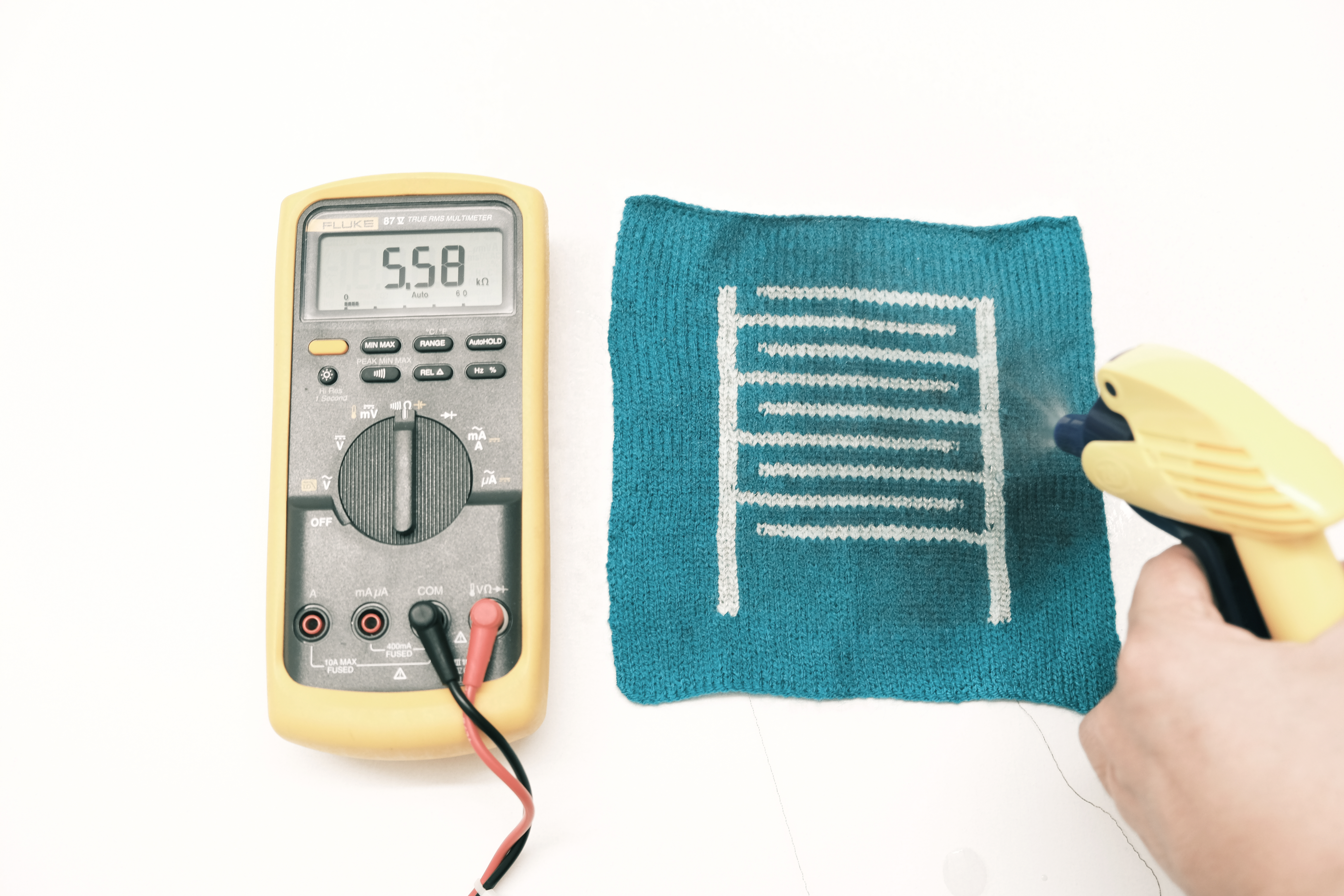
When water is present on the textile, it would form a conductive path between the two electrodes, resulting in dropping resistance.
Pressure Sensors
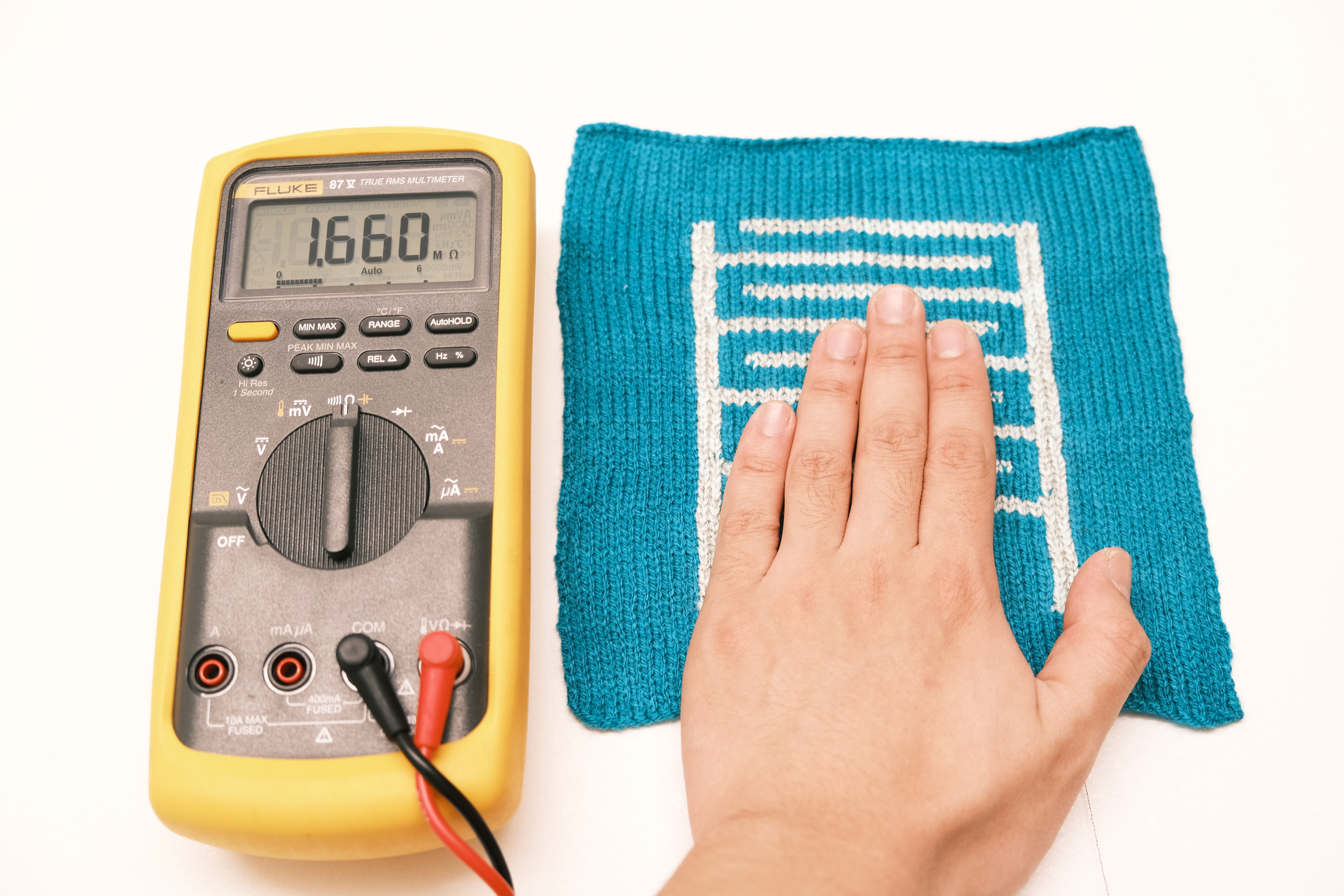
The same interdigital electrode pattern can be used as a pressure sensor. The more you press, the lower the resistance would be.
It basically connects part of the human body (which is conductive) between the electrodes. Higher the pressure, better the contact, lower the resistance. The interdigital pattern simply increases the area of the skin that is connected between the two electrodes (which probably produces better measurable results).
Limitations of this method include: 1. It requires direct contact between the human skin and the electrode. 2. It is prone to humidity crosstalks. 3. The baseline of the sensor would be dependent on which hand it touching it (would vary from person to persom).
With the same pattern, I knitted a sock that can sense pressure of different areas on the foot (e.g. tone & heel).
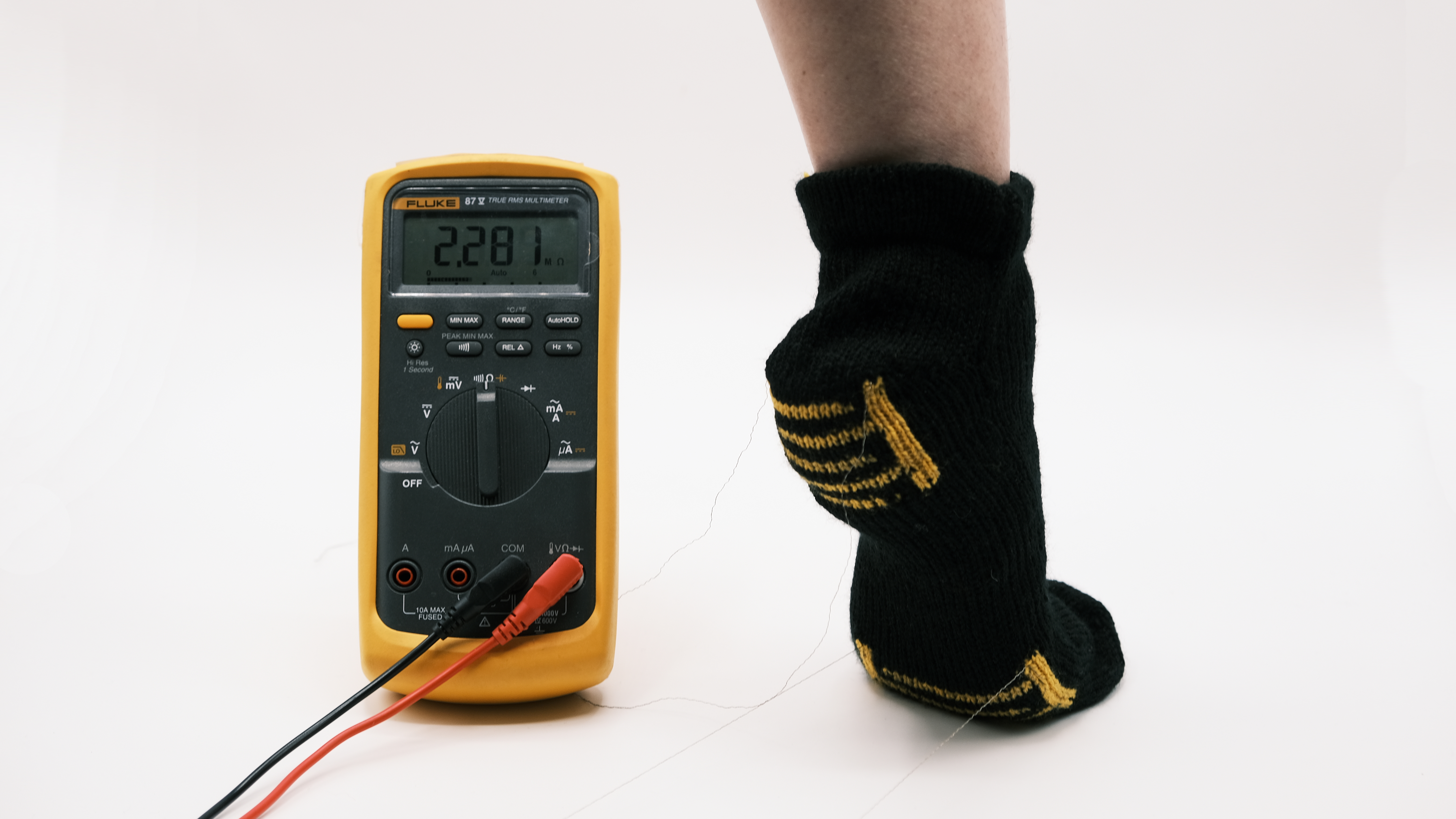
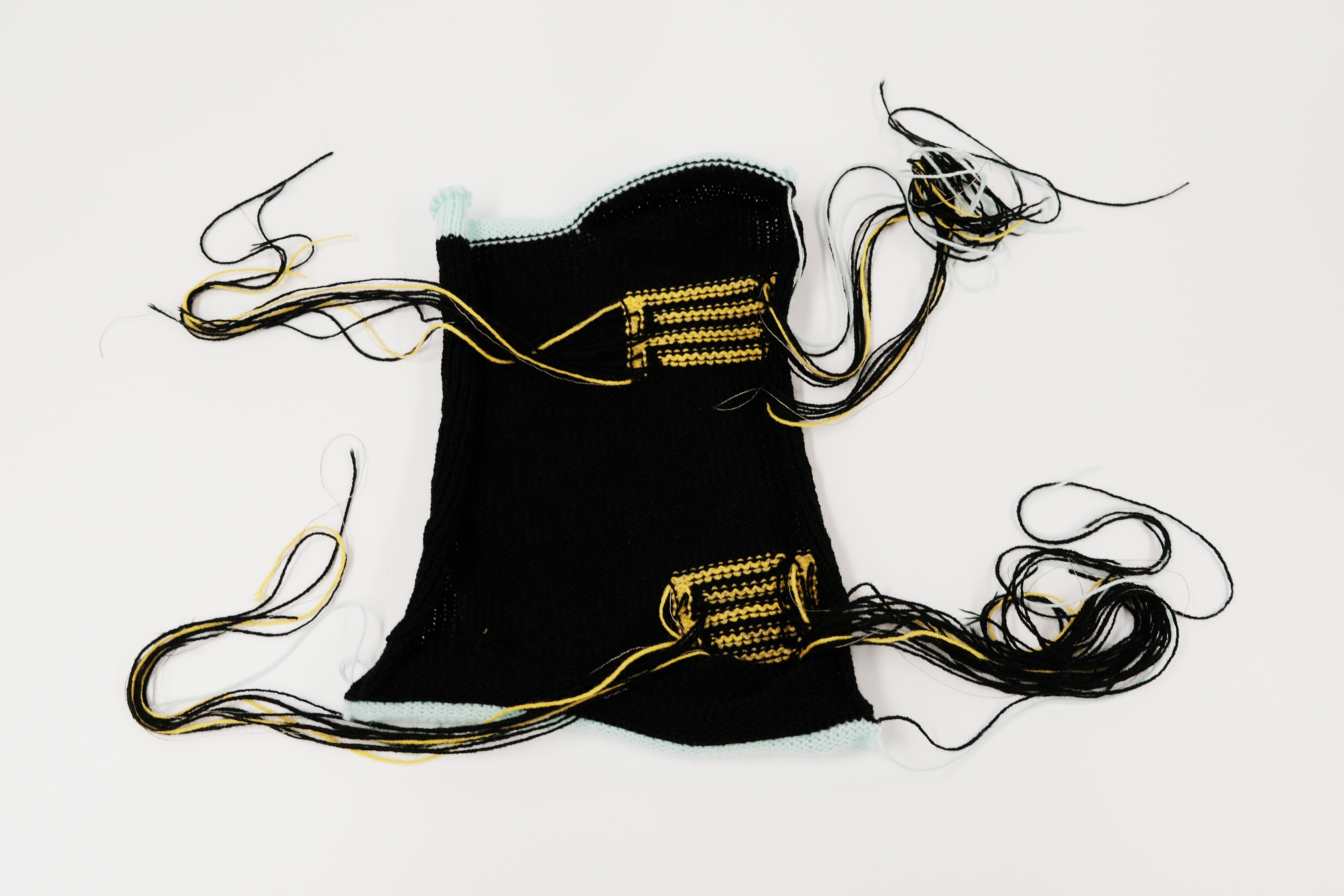
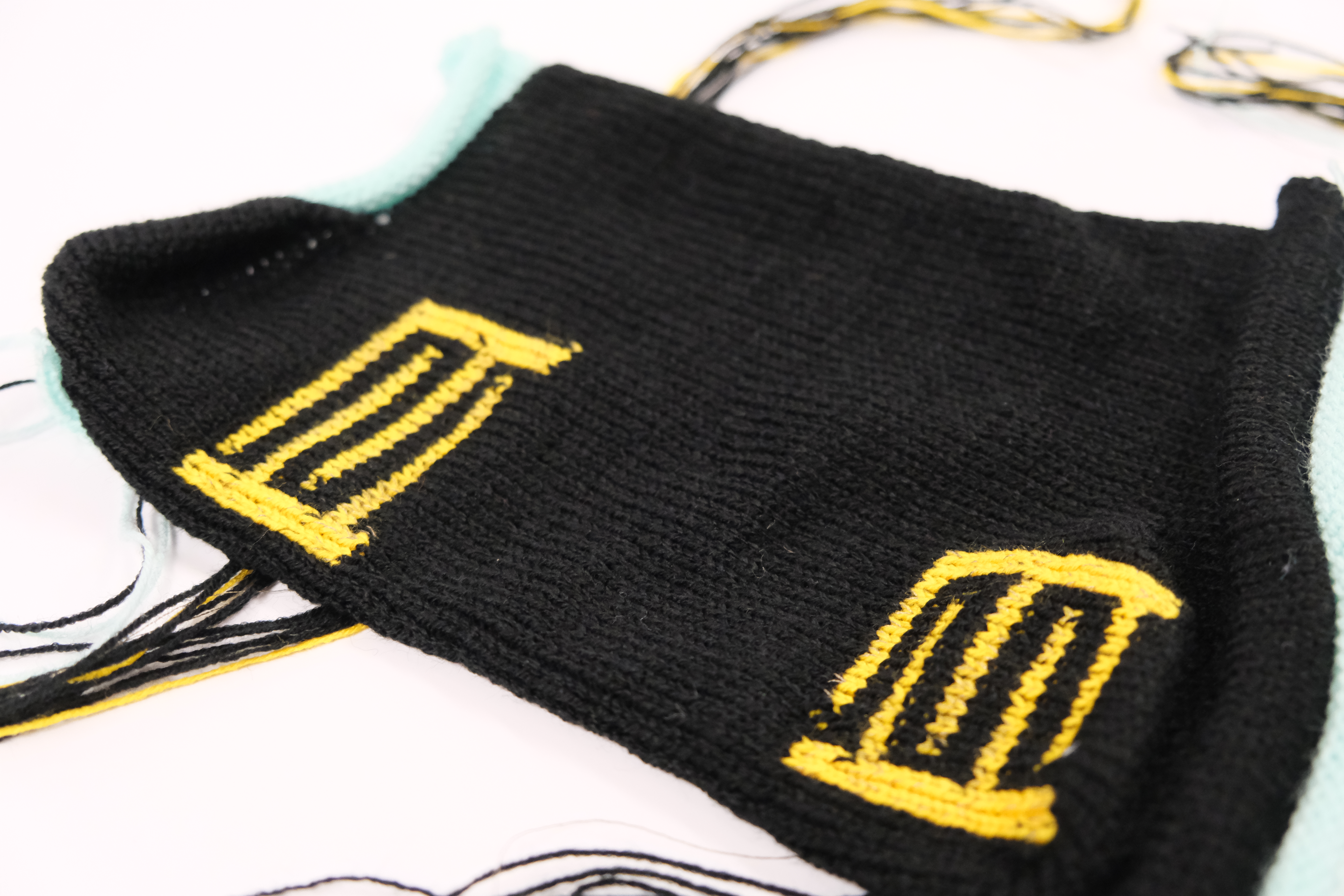
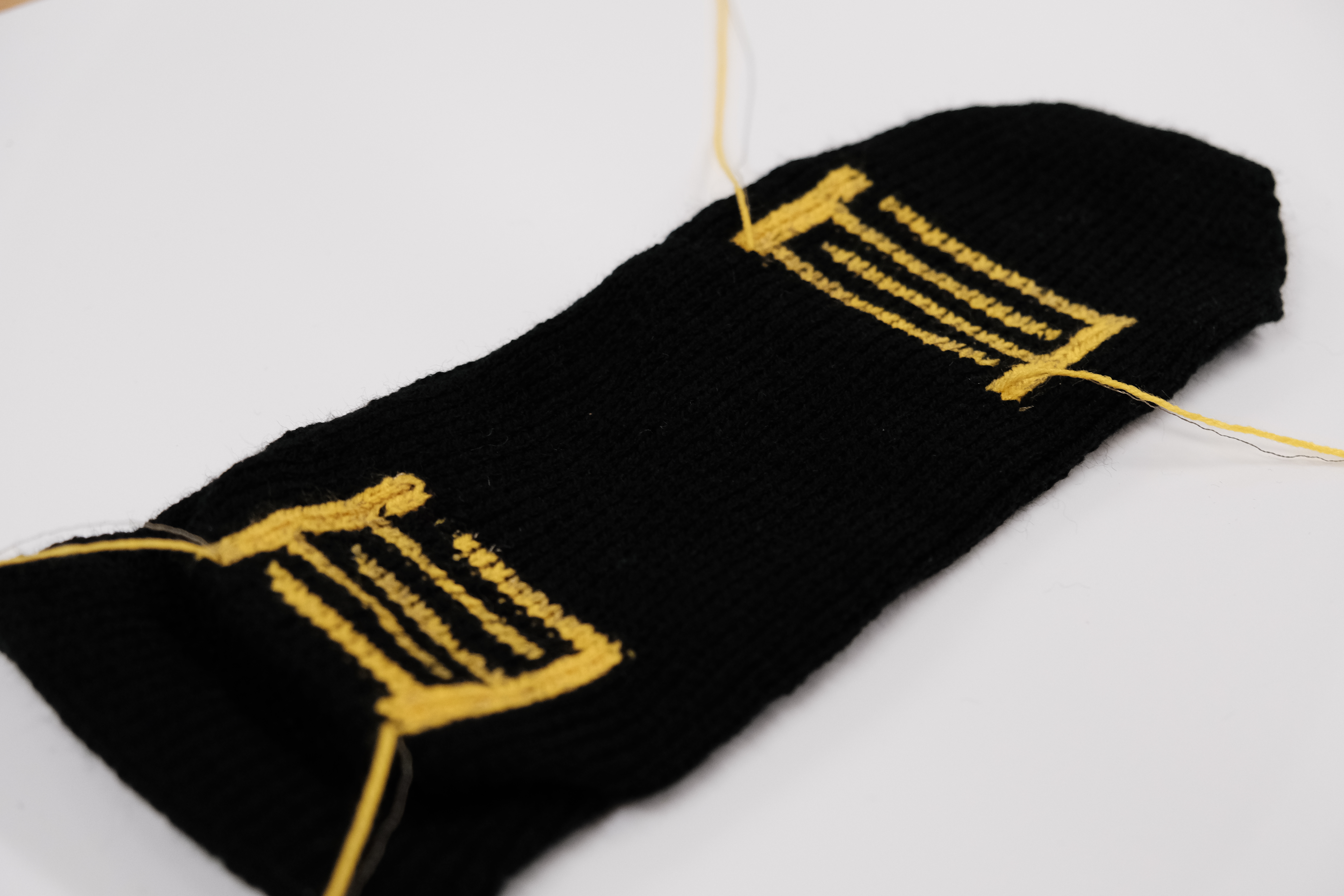
Stretch/Bend Sensors
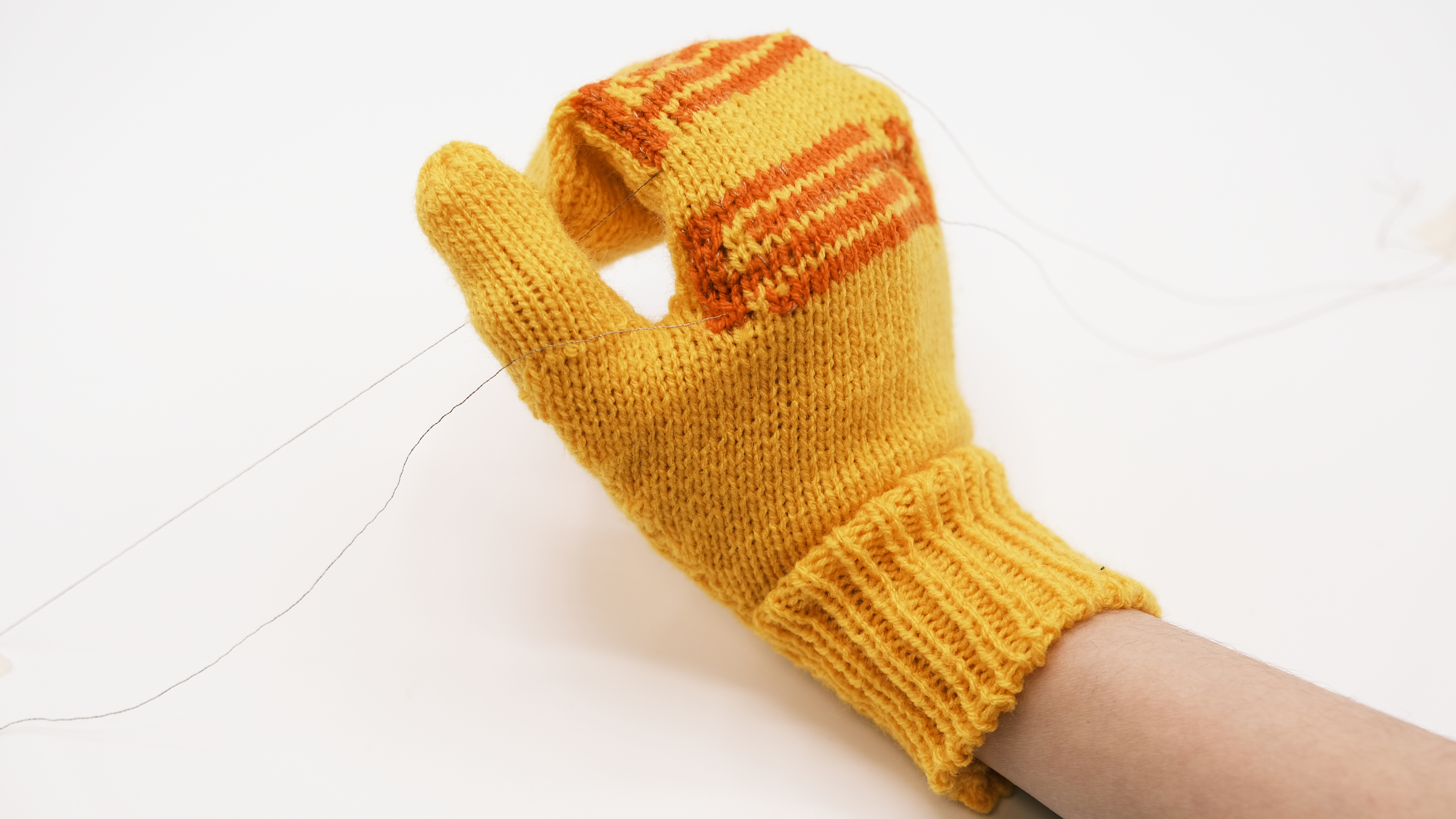
The same pressure sensing interdigital pattern can also be utilized to sense stretch/bend.
Long as the garment is tight enough, when you bend the joint, this movement will always translate to the increase of pressure on that joint, which can therefore be sensed.
